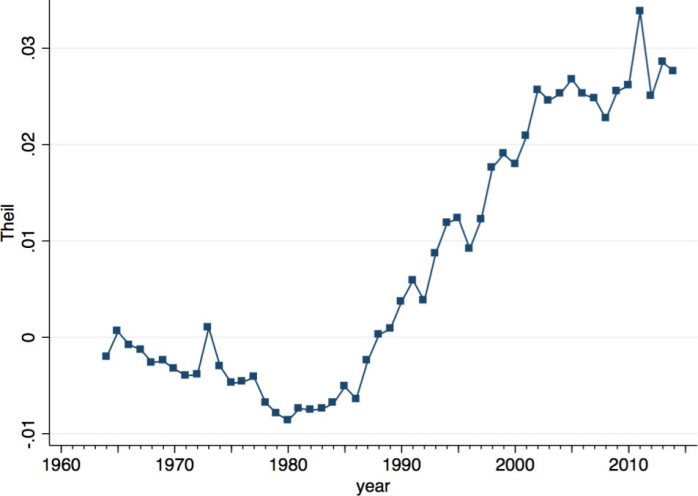From James Galbraith and Jaehee Choi and The Inequality Crisis Inspection of trends and changes in inequality gives a strong clue to the sweep of events. There are four trends and three distinct turning points. From 1963-1971, no trend appears, and changes in individual countries are for the most part small. After 1971, while inequality increases in some of the wealthy countries, in much of the world it is declining. After 1980, there is a radical change, and the world enters on a period of large inequality increases, sweeping across regions beginning in Latin America and Africa, hitting Eastern Europe and the (former) USSR after 1989, and moving on to Asia in the 1990s. In 2000 there is a further turning point, after which stabilization and even modest declines in inequality are found
Topics:
Editor considers the following as important: Uncategorized
This could be interesting, too:
tom writes The Ukraine war and Europe’s deepening march of folly
Stavros Mavroudeas writes CfP of Marxist Macroeconomic Modelling workgroup – 18th WAPE Forum, Istanbul August 6-8, 2025
Lars Pålsson Syll writes The pretence-of-knowledge syndrome
Dean Baker writes Crypto and Donald Trump’s strategic baseball card reserve
from James Galbraith and Jaehee Choi and The Inequality Crisis
Inspection of trends and changes in inequality gives a strong clue to the sweep of events. There are four trends and three distinct turning points. From 1963-1971, no trend appears, and changes in individual countries are for the most part small. After 1971, while inequality increases in some of the wealthy countries, in much of the world it is declining. After 1980, there is a radical change, and the world enters on a period of large inequality increases, sweeping across regions beginning in Latin America and Africa, hitting Eastern Europe and the (former) USSR after 1989, and moving on to Asia in the 1990s. In 2000 there is a further turning point, after which stabilization and even modest declines in inequality are found in Russia, China, Latin America, parts of Africa and elsewhere. Figure 1 provides this time trend as estimated above, over the entire global data set. The key turning points in the early 1970s, in 1981, and 2000 emerge very clearly.
Figure 1 The Time Trend of Global Inequality
US UK JP AU

